Fifth Treaties Recognition Week sees new online treaty education resources in development
Posted on November 2, 2020Print Friendly | Contact the Editor
The Anishinabek Nation announces the current development of an online interactive treaty education resource that will be available in spring 2021.
ANISHINABEK NATION HEAD OFFICE (November 2, 2020) – Anishinabek Nation Grand Council Chief Glen Hare says that the Anishinabek Nation is still committed to treaty education in Ontario and is excited about the development of online treaty education resources that will become available in the new year.
“We’ve been saying for years that treaty education, public education will help eliminate racism,” says Grand Council Chief Hare. “We’re supporting teachers and students by making our treaty kits into online resources so that they can still learn about First Nations and the treaty relationship while at home or in the classroom.”
Treaty educator Kelly Crawford is working with Frame Sequence Photography to not only bring some of the “We are all Treaty People” teachers kit lesson plans to an online platform, but also will make the “Alex Shares his Wampum Belt” and “Dakota Talks about Treaties” connect to the Ontario curriculum and embark on a co-learning journey.
“In education, we are tasked with supporting the on-going growth and development of our students. I see a parallel here in regards to the teaching profession,” says Crawford. “The journey of understanding the treaty relationship and one’s role within it can be a collaborative journey with the teacher and the students. This is what we are trying to achieve with our new online treaty education resources. It’s okay to take that journey together and have clear discussions of the realities in which we live. Educators have a role in the story of the treaty relationship.”
Minister of Indigenous Affairs Greg Rickford acknowledges the importance of treaty education.
“I commend Anishinabek Nation’s ongoing work in promoting awareness and understanding of treaties and treaty relationships,” said Greg Rickford, Minister of Indigenous Affairs. “Encouraging education around treaties is an important way to help nurture and advance the vital relationship between Indigenous and non-Indigenous people.”
The online treaty education resources will be available in spring of 2021.
To view a sneak-peek of the online treaty education resource, please visit the Anishinabek Nation YouTube channel.
Treaties Recognition Week 2020: Recommended Watching and Reading
Treaties Recognition Week began in 2016, as a way to show continued relevance of treaties in our lives. It is the first week in November each year.
Much of Canada exists under treaty agreements for shared use of the land between Indigenous and non-Indigenous people. Treaties “define ongoing rights and obligations” for everyone who lives in Canada.
The first treaty signed in what is now known as Canada was in 1701, between Indigenous Communities and the British Crown. It was for the British Colonies of North America. The first treaty signing with the Canadian Government was in 1871. The most recent treaty signing in Canadian history (PDF) was between the Cree Nation and the Canadian Government in 2018.
Treaties uphold Indigenous rights to land, resources, water, health care, education and much more. At times, Canada has not upheld their end of these agreements. But Indigenous peoples continue to uphold their end of the agreement.
These treaties, signed by previous and current governments, include everyone who lives in Canada. Everyone is responsible to uphold treaty rights.
At Toronto Public Library, we recognize local treaties through land acknowledgement statements. We share these statements at the start of events and meetings. We have three statements because Toronto Public Library has 100 branches located across a wide geographic area. Each branch page has the land acknowledgement statement for that branch. Take a look at your local branch statement. You can also find out more about TPL’s land acknowledgement statements on our Land Acknowledgement Statements FAQ page.
Interested in learning more about treaties specific to Toronto? We will be hosting Talking Treaties in Tkaronto on Crowdcast on November 5. Register now to save your spot and get an event reminder. Presented by Ange Loft (Kanienehaka) of Jumblies Theatre, this event will focus on treaties specific to the area now known as Toronto. You can also tune in right at 6 pm. An event replay will be available to watch online after the event.
Want to learn more about treaties in Canada? Here are some books and documentaries in our collection to learn more. We encourage you to learn more about these lands and the communities whom they belong to.
Please note that if a resource is by an Indigenous person, their nation is in brackets next to their name, where possible. Descriptions of these documentaries and books are based on descriptions from the creators.
Documentaries
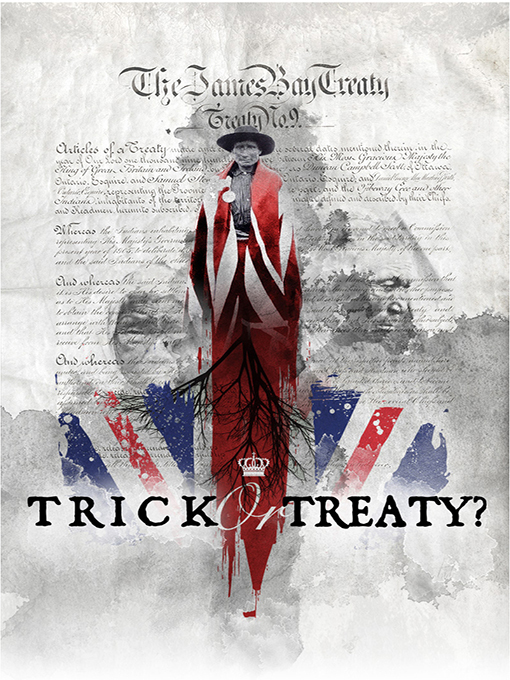
Trick or Treaty?, directed by Alanis Obomsawin (Odanak) and Annette Clarke
This documentary follows Indigenous leaders seeking justice in negotiations with the Canadian Government. By tracing the history of their ancestors since the signing of Treaty No. 9, they aim to raise awareness about key issues to First Nations in Canada.
Is the Crown At War With Us? By Alanis Obomsawin (Odanak)
In the summer of 2000, federal fishery officers clashed with Mi’gmaq fishermen in Burnt Church, New Brunswick. Why would Canadian Government Officials attack the Mi’gmaq for exercising their treaty rights?
Nisga’a Dancing in Both Worlds by John Bassett, Rosalind Farber and Annette Shaffer
This documentary follows the Nisga’a beginning in 2003, “to document their history, their struggle, and life since the signing of the Nisga’a treaty in May 2000.”
Besides borrowing a DVD or using Kanopy, you can also watch this documentary on YouTube.
Books

We Are All …: Treaty People by Maurice Switzer (Anishinabek and Haudenosaunee), illustrated by Charley Hebert (Anishinabek)
“This book gives the history of the culture, values, co-existence, Seven Years War, treaties, Oka, and present day events.”
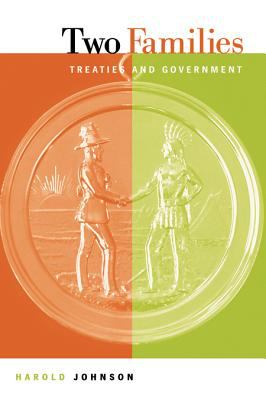
Two Families: Treaties and Government by Harold Johnson (Cree)
First Nations Elders saw treaties as a way to give Europeans the right to settle, share resources and build an equal relationship with Indigenous communities. They did not intend to give Europeans the means to legislate every aspect of Indigenous lives. Johnson provides an easy-to-read definition of treaties and what they represent.
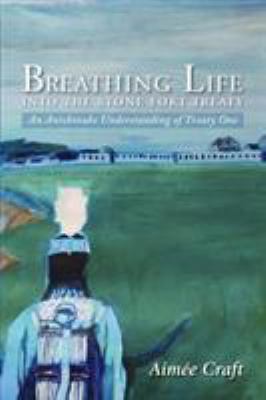
Breathing Lift into the Stone Fort Treaty: An Anishinabe Understanding of Treaty One by Aimée Craft (Anishinabe-Métis)
“In order to interpret and implement a treaty … we must look to its spirit and intent, especially for both parties at the time” of treaty negotiation. Craft shows how Anishinabe laws (inaakonigewin) defined treaty negotiations.

Living Treaties: Narrating Mi’kmaw Treaty Relations edited by Marie Battiste (Mi’kmaw)
“First Nations, Métis and Inuit lands and resources are still tied to treaties and other documents. It is important to understand that treaties are still relevant and constitutionally significant, despite disputes.
Living Treaties shows another side of treaties and their histories from a Mi’kmaw and non-Mi’kmaw perspective. Living Treaties features voices of a new generation of Indigenous lawyers and academics pursuing social and cognitive justice for their families and their people.
Their mission:
- to bring treaties back into public awareness from the archives
- to justice as part of the supreme law of Canada, and
- to use them to mobilize Mi’kmaw restoration and renaissance.”
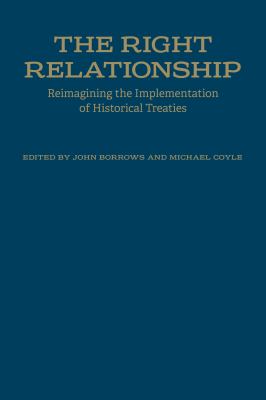
The Right Relationship: Reimagining the Implementation of Historical Treaties by John Borrows (Anishinabe) and Michael Coyle
This book offers diverse perspectives on how to use “Indigenous people’s own legal and policy frameworks … to develop healthier attitudes between First Peoples and settler governments in Canada.”

Treaty No. 9: Making the Agreement to Share the Land in Far Northern Ontario in 1905 by John S. Long
For over a century, Northern Ontario has been shared among the governments of Canada, Ontario and the First Nations who signed Treaty No. 9 in 1905. For just as long, details about the signing of Treaty No. 9 have been known only through the accounts of two of the commissioners appointed by the Government of Canada. Long presents the neglected account of a third commissioner.
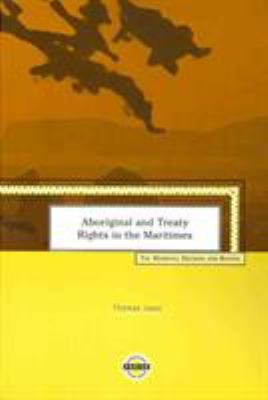
Aboriginal and Treaty Rights in the Maritimes: The Marshall Decision and Beyondby Thomas Isaac
This book examines “First Nations’ rights in the Maritimes through Canadian jurisprudence around Indigenous and treaty rights, rules on interpreting treaties, and how constitutional provisions affect these rights.” The Marshall Decision goes above and beyond previous decisions made by the Supreme Court of Canada.
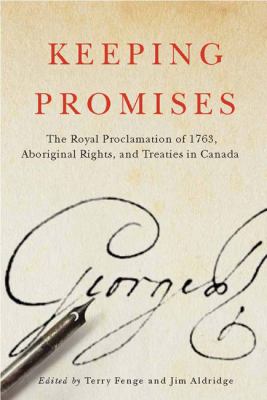
Keeping Promises: The Royal Proclamation of 1763, Aboriginal Rights, and Treaties in Canada by Jim Aldridge and Terry Fenge
Aldrige and Fenge discuss how the Proclamation of 1763 is the foundation for all treaties that came after it, in North America and the Caribbean. They also discuss how the Proclamation was also key for “the settlement and development of Canada.”
We hope you’ll join us on November 5 at 6 pm for Talking Treaties in Tkaronto, or try one of these resources!
https://torontopubliclibrary.typepad.com/programming/2020/10/treaty-recognition-week-2020-recommended-watching-and-reading.html
WRDSB recognizes Treaties Recognition Week
November 3rd, 2020
Every year, the first full week of November is Treaties Recognition Week, which was initiated by Ontario’s Ministry of Indigenous Relations and Reconciliation (MIRR) in 2016.
This year, Treaties Recognition Week is November 2 to 6, 2020.
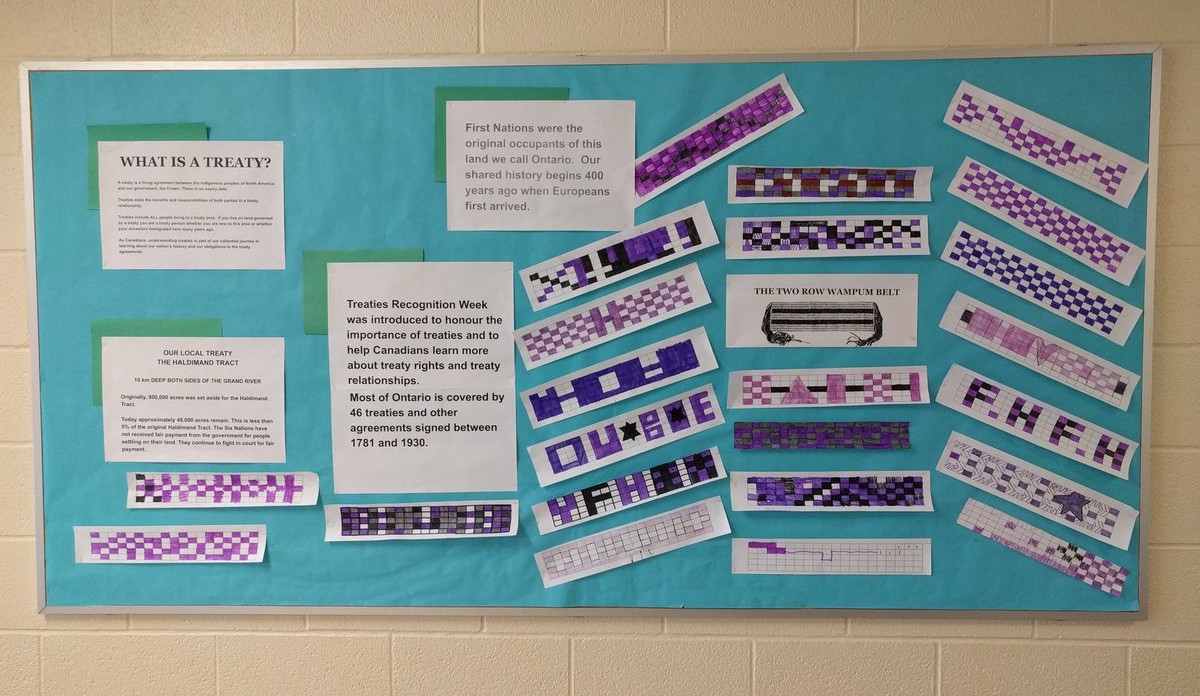
It was introduced to honour the importance of treaties and to help Ontarians learn more about treaty rights and treaty relationships. Most of Ontario is covered by 46 treaties and other agreements, such as land acquisitions by the Crown signed between 1781 and 1930. First Nations had their own process of treaty-making that had existed for thousands of years. Treaties are legal agreements between two or more nations. Every Canadian is a treaty person and has a responsibility to the treaty relationship.
Treaties Recognition Week is a special opportunity for all Ontarians to learn about why treaties matter. By learning more about our collective treaty rights and obligations, we can create a greater understanding and nurture these relationships.
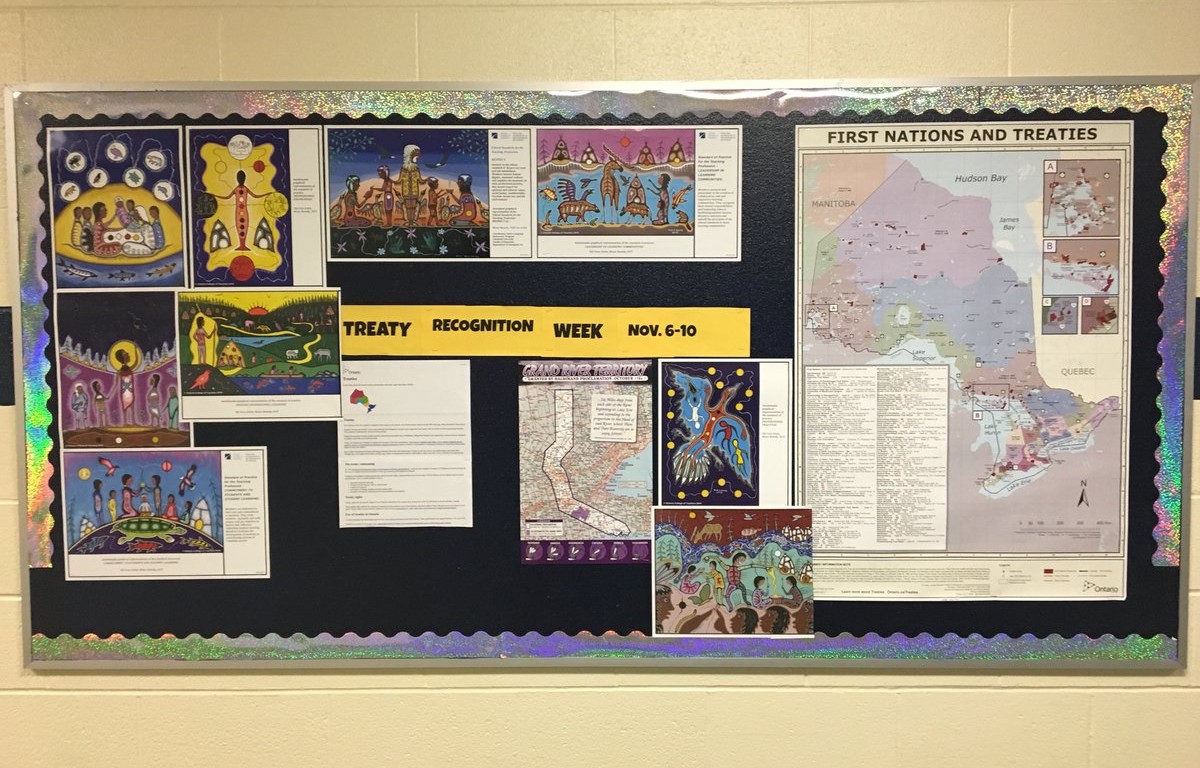
We hope our students, staff and families consider incorporating treaty information into their teaching programs and conversations not just during this week, but beyond.
We are all Treaty people.
Helpful resources:
- Ontario Ministry of Indigenous Affairs: Treaties
- Crown-Indigenous Relations and Northern Affairs Canada: Treaties and agreements
- Treaty Talk With âpihtawikosisân
- The First Nations, Métis and Inuit Education Association of Ontario: Pedagogical Considerations for Treaty Education
- Office of the Treaty Commissioner (OTC)
How are you recognizing and learning about treaties during Treaties Recognition Week? Share with us by mentioning @wrdsb on Twitter or @wr_dsb on Instagram and using the hashtag #IndigenousWRDSB.
https://www.wrdsb.ca/blog/2020/11/03/wrdsb-recognizes-treaties-recognition-week/

| Treaties Recognition Week 2020 https://mailchi.mp/774f76e1ad8b/host-an-event-for-treaties-recognition-week-nov-1-12532011?e=caa9c25b42 The countdown to Treaties Recognition Week begins! Between November 1-7, 2020, Ontarians across the province will *virtually* come together to learn about the importance of treaties and how they continue to shape the province today. Use this tool kit as your one-stop resource for information on all Treaties Recognition Week virtual Living Library events and resources. We hope you’ll also join the conversation happening across Ontario by using #TreatyON when you post about Treaties Recognition Week – and follow the Ministry of Indigenous Affairs on Twitter and Facebook for updates throughout the week. And while things might look a little different this year, you won’t want to miss new learning opportunities and offerings. |
| Theme: Why is it important to learn about Treaties?AUDIENCE: ELEMENTARY Monday, November 2, 2020 10:30 a.m. – 11:30 a.m.Format: One-hour panel discussion followed by 30-minute Q&A sessionPanelists: Kelly Crawford, Bentley Cheechoo and Josh Eshkawkogan Moderator: Bob Goulais EVENT POSTER | REGISTER NOWTheme: Cultural appreciation vs. appropriationAUDIENCE: SECONDARY Wednesday, November 4, 2020 1:30 p.m. – 3:00 p.m.Format: One-hour panel discussion followed by 30-minute Q&A sessionPanelists: Brenda Collins and Doe O’Brien-TeengsModerator: Cynthia Wesley-EsquimauxEVENT POSTER | REGISTER NOW |
| Theme: We are all treaty peopleAUDIENCE: PUBLIC EVENT – suitable for secondary school participants Friday, November 6 10:30 a.m. – 12:00 p.m.Format: One-hour panel discussion followed by 30-minute Q&A sessionPanelists: Maurice Switzer and Robert GreeneModerator: Bob GoulaisREGISTER NOWNote: For those unable to join the live events, recordings will be posted on Ontario.ca/treaties, where you can also find additional information about treaties in Ontario. |
| Treaty resources you won’t want to miss! *NEW* Video series: Indigenous Voices on Treaties – Indigenous speakers share knowledge about treaties, treaty relationships and rights in Ontario.Map of Ontario Treaties and Reserves – Helps students identify the treaty land where they live and go to school.Gdoo-Sastamoo Kii Mi Resource Page – Anishinabek Nation page with lesson plans and videos that complement a treaties-focused teaching guide.Ministry of Indigenous Affairs treaties page – Resources to support learning about treaties, treaty relationships, and treaty rights that shape Ontario.Historica Canada’s Treaties in Canada Portal – Education guide to support classroom learning on treaties.Archives of Ontario James Bay Treaty Virtual Exhibit |
 Social Media Graphics to use on your social channels Use these posts, and feel free to pair with your own original content to promote Treaties Recognition Week. Make sure to follow the Ministry of Indigenous Affairs on Twitter and Facebook for updates throughout the week.  Printable word-searches, crosswords and more! Available November 1, printable resources including: a word-search, crossword puzzle and a treaties in Ontario map colouring page will be available to use and learn about treaties in a fun and interactive way. |
| Update your Facebook photo to mark Treaties Recognition Week Starting November 1, a Facebook profile picture frame will be available. “Like” the Ministry of Indigenous Affairs Facebook page for updates.Use #TreatyON on your social channels Post your in-classroom or virtual event photos to Twitter and Facebook using the hashtag #TreatyON. |
| Questions about how to use the content provided here? |